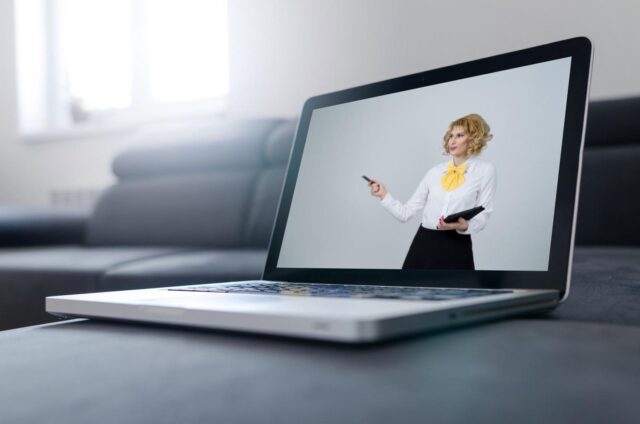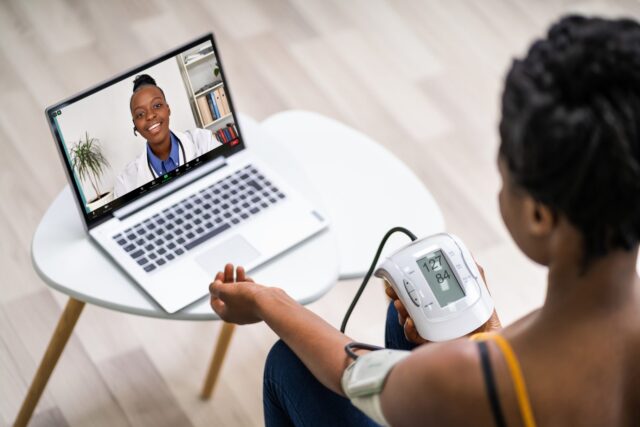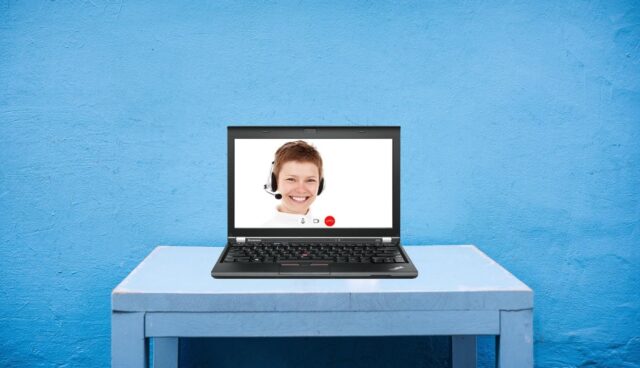
As more individuals use digital tools to speak remotely, whether to stay in touch with loved ones, keep business moving along, or communicate with clients, video conferencing software such as Zoom and Thera-LINK has recently gained much attention.
Before the global COVID-19 pandemic, digital healthcare solutions were becoming more popular. During the pandemic,there was such a high risk of transmission and so much pressure on healthcare providers. Therefore, there was a greater need than ever for remote healthcare solutions that lessen interpersonal contact while enabling doctors to provide a high standard of care.
The difficulty? Many widely used video conferencing software are not HIPAA compliant. This makes them illegal to utilize them to deliver the necessary remote treatment. For instance, tough questions about Zoom’s security have been raised.
To safeguard patient privacy and guarantee that patients can easily access their medical records, the Health Insurance Portability and Accountability Act of 1996 (HIPAA) was passed.
What, then, qualifies a video conference tool as HIPAA-compliant? The HIPAA Privacy Rule and the Security Rule equally apply to video conferencing.
HIPAA compliance requires that all software that stores or transmits data relating to a patient’s personal health information follow strict security and privacy guidelines. Let’s examine what that includes in more detail.
Implementing HIPAA: Key Elements
In order to stay HIPAA-compliant, healthcare industry stakeholders that deal with the transmission of ePHI can take a number of steps, especially in the crowded videoconferencing market where non-compliance is rampant.
Encryption From End To End
Keeping bad actors and unauthorized third parties from accessing the video conference or the data created during the session is one of the most important things to consider when using video conferencing.
This brings up the issue of encryption. Does the video conference program you use employ encryption? How straightforward is it to get the encryption key? Because only the gadgets that initiate the video call have direct exposure to the encryption key, end-to-end encryption is the gold standard for HIPAA compliance.
Peer-to-Peer Relationship
Routing is a crucial issue to think about. Does the video travel through a server or link directly from your computer or portable device to your patient’s device? Direct peer-to-peer routing offers security advantages and significantly faster and better video conferencing. However, your video conferencing application should also be end-to-end secured for genuine HIPAA compliance.

BAAs
Another crucial element of HIPAA compliance is Business Associate Agreements (BAAs). According to this agreement, all parties involved must take proactive steps to guarantee that protected health information is adequately secured.
Access To Vendors And Auditing
Who has access to confidential personal data is a vital factor for HIPAA compliance. While video conferencing service providers may shield patient information from prying eyes, what about their staff?
Vendors must put administrative, physical, and technical security measures to prevent unauthorized users from accessing any data designated as ePHI. For instance, all gadgets, including tablets and smartphones, must be password protected (ideally 2FA). The video conferencing software should support user authentication and password protection. Only a small number of authorized users should also have sign-in credentials.
Accidental transgressions
While HIPAA standards may not legally be broken by applications like Zoom if certain functionalities are disabled for healthcare users, you could still do so by inviting patients to a conference or accidentally saving their data in your Zoom account. This is why it’s crucial to work with a vendor who is entirely familiar with the HIPAA standards and can assist you in preventing unintentional violations.

Verifying Secure Connection
A secure conference connection created during a videoconferencing session safeguarded PHI and other private information. Verification technology ensures that a connection was made to the correct server, not a fake one. This technology is used in HIPAA compliant video conferencing to guarantee that an unsecured video meeting won’t take place if a secure connection cannot be made.
Verification technology offers a significant advantage compared to conventional, hardware-based video conferencing installation. Remote workers can modify configuration parameters in these older systems without system supervision. This enables the transmission of sensitive data—including ePHI—unprotected over the Internet.
Securing the Operating System

Many folks who have viewed a PowerPoint presentation or participated in a live video conference have undoubtedly seen one or both of those events start late. The delay is frequently the result of an operating system problem. Virtually all videoconferencing systems utilize an operating system, whether a mobile or general-purpose one like iOS or Android or a general-purpose one like Windows.
The OS must be correctly configured for videoconferencing. Administrators must find and fix any software flaws. Administrators should utilize appropriately configured firewalls and secure administrator credentials to reduce the vulnerability of video systems to security issues. Running OS with the most recent versions of pertinent service packs and security updates is recommended. The most recent firmware revision for mobile devices should be used.
Private Cloud Web Conferencing
Although a private-cloud solution gives a higher level of security, the HIPAA Security Rule does not mandate that HIPAA video conferencing be cloud-based. This is because data is kept in a private cloud behind the provider company’s firewall. The location of saved documents and saved recordings can also be managed by a provider. A provider may choose “no content storage” in a private cloud. Any shared files or content are removed from the system after a telehealth session. A private cloud solution benefits patient care, meetings, or consultations.
Best Video Conferencing Platforms That Adheres To HIPAA-Compliance
It’s difficult enough to create video software from scratch without having to worry about HIPAA compliance. The video conferencing market is crowded, and it’s much simpler to discover an industry-leading product that interacts with your current telemedicine platform and is specially created with compliance in mind.
Simple Practice Telehealth

Medical practitioners that focus on treating patients with both physical and mental health will find it to be one of the few telemedicine software alternatives on this list that enables insurance processing. People who engaged in social withdrawal in 2020 rapidly discovered the potential conflicts between social media and mental health.
Providers can gather insurance information, give patients customized intake forms, and check any data or images patients have supplied before a consultation. Both new and returning customers can check available time slots, schedule an appointment with their favorite healthcare professional, and define the precise medical service they require via the client portal using the online booking tool.
Thera-LINK
A telemedicine technology designed exclusively for mental health experts is called Thera-LINK. It offers a three-day free trial and complies with all HIPAA regulations.
Thera-LINK offers practice management capabilities like automated reminders, online credit card payment options, and its native Directory tool that enables those looking for counselling to find your clinic in an online database, much like the other products on this list.
Thera-LINK is a great teletherapy tool for all mental healthcare organizations, but it’s perfect for those who offer group counselling, family therapy, or host support groups. Many HIPAA-compliant telehealth providers only provide two-way video calling. However, Thera-LINK has yet to have a predetermined cap on the number of patient displays that can be displayed at once. As a result, it makes for a perfect webinar platform for those working in the mental health field.
In addition, Thera-LINK provides a specific virtual waiting area with a range of music, a calming backdrop image, and even a lock that stops clients from starting their session until they have paid.
Zoom for Healthcare

One of the most widely used video conference tools available is Zoom. Zoom’s free version is not HIPAA compliant, though. The Zoom for Healthcare plan, which features a wealth of HIPAA-compliant capabilities, must be investigated by healthcare practitioners.
The ability of Zoom for Healthcare to interact with medical devices, such as digital stethoscopes, exam cameras, and a patient’s electronic health record (EHR), is one of its most distinctive features. This is something that many of the other products on this list need help to perform.
Additionally, it supports HIPAA-compliant local desktop recordings, offers screen sharing for teamwork with additional healthcare providers, and even incorporates Epic healthcare software. The maximum number of users who can join a telemedicine appointment using Zoom for Healthcare depends on the particular package customers choose.
VSee
For healthcare practitioners, VSee offers more than just video conferencing software. It provides:
- A single tool for handling patient forms.
- Scheduling appointments.
- Having high-quality video conversations.
With the help of VSee’s Everyday Health feature, which enables providers to define and track patient wellness objectives, patients are actively engaged outside a single telemedicine consultation. Fitbit, blood pressure monitors, wireless scales, and other gadgets can all be integrated with it. Patients can upload food diaries, make and share mood charts, and send photos to their healthcare physician with the VSee smartphone app.
Additionally, VSee excels at providing walk-in telemedicine appointments. The waiting room function offers more than providing booked patients with an online waiting area to wait until their practitioner starts the consultation. Virtual walk-in patients can also keep track of their wait time, watch instructional videos while they wait, or use live chat help.
Doxy.me

Doxy.me is a telemedicine video platform that complies with HIPAA regulations and is trustworthy, private, and easy to use. Several plans and pricing options are available for the software, including a free edition. It is ideal for your general medical office because of its user-friendly interface.
Doxy provides a client queue. This provides excellent flexibility, enabling medical personnel to quickly reschedule appointments and observe an individual in their waiting room if their booked patient is running late.
Healthcare providers can completely personalize their waiting areas by selecting calming photos, motivational movies, or comments about teamwork for patients to read.
Both iOS and Android mobile devices can access doxy.me. The telemedicine plan is free but it also provide two premium options with additional patient management features.
GoToMeeting
GoToMeeting is a video conference tool with all the features medical professionals and healthcare organizations require to stay in touch. With a BAA, AES 256 encryption, meeting locks, one-time passwords, disabled recordings, and in-session chat, it complies with HIPAA regulations.
Conclusion
If the demands of your practice are particular and none of the aforementioned services seem to be a good fit, think about developing your solution. The development of your telehealth app can be accelerated and made more feature-rich by simply integrating a video API instead of internally engineering sophisticated functionality.
Integrating an in-app chat API may personalize your virtual waiting area and improve the quality of your online appointment experience.













